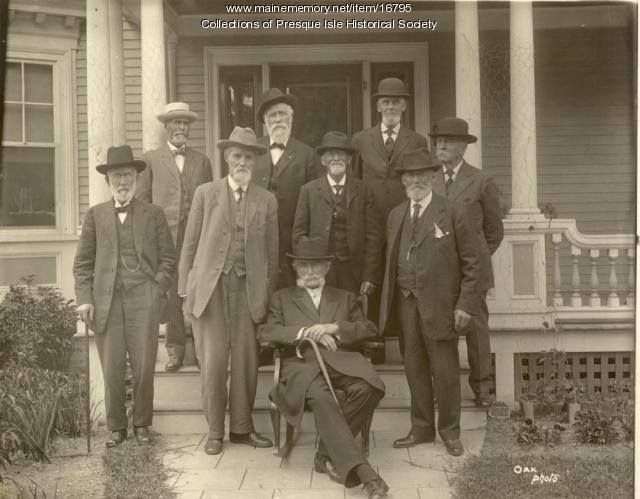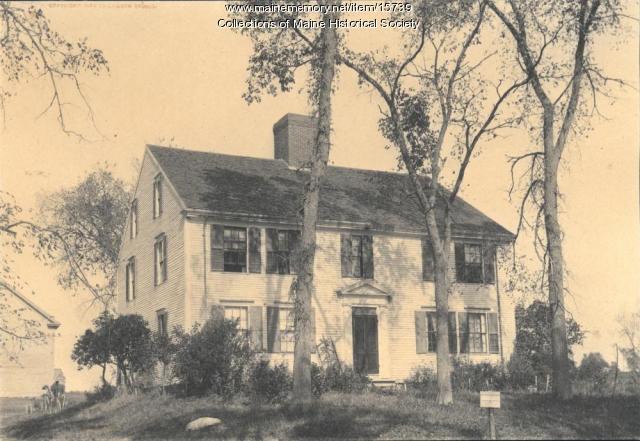Keywords: stands
Item 23726
Tourist information tent, Portland, 1921
Contributed by: Maine Historical Society/MaineToday Media Date: 1921 Location: Portland Media: Glass Negative
Item 39366
Viewing stand at Maplewood Park, Bangor, ca. 1895
Contributed by: Bangor Historical Society Date: circa 1895 Location: Bangor Media: Glass Negative
Item 32474
Assessor's Record, Judge's Stand, Auburn Street, Portland, 1924
Owner in 1924: Summit View Park Association Use: Judge's Stand
Item 99035
1929-2013 Forest Avenue, Portland, 1924
Owner in 1924: Riverton Realty Company Use: Candy Stand
Item 150814
Hotel for Rigby Park and Grand Stand, Cape Elizabeth, 1893-1894
Contributed by: Maine Historical Society Date: 1893–1894 Location: Cape Elizabeth Client: Maine Mile Track Association Architect: George M. Coombs
Item 151418
Brewster House Bed & Breakfast, Freeport, 1993-1994
Contributed by: Maine Historical Society Date: 1993–1994 Location: Freeport Clients: Matt Cartmell; Amy Cartmell Architect: Carol A. Wilson; Carol A. Wilson Architect
Exhibit
Dressing Up, Standing Out, Fitting In
Adorning oneself to look one's "best" has varied over time, gender, economic class, and by event. Adornments suggest one's sense of identity and one's intent to stand out or fit in.
Exhibit
Like many cities in France, Lewiston and Auburn's skylines are dominated by a cathedral-like structure, St. Peter and Paul Church. Now designated a basilica by the Vatican, it stands as a symbol of French Catholic contributions to the State of Maine.
Site Page
John Martin: Expert Observer - Pendleton & Ross stand, Bangor, 1864
"Pendleton & Ross stand, Bangor, 1864 Contributed by Maine Historical Society and Maine State Museum Description John Martin (1823-1904) of…"
Site Page
Thomaston: The Town that Went to Sea - The Prince House
"Both his house and his namesake’s house still stand on Main Street, his at 29 Main and his son, Hezekiah II’s at 101 Main Street."
Story
Quinton "Skip" Wilson: different aspects of "standing out"
by Biddeford Cultural & Heritage Center
Recollections of life as Biddeford's only student of color during the 1960-70s
Story
Growing up on a potato and dairy farm
by Paula Woodworth
Life growing up and working on a potato and dairy farm was hard work but fun in Aroostook County.
Lesson Plan
Longfellow Studies: The Elms - Stephen Longfellow's Gorham Farm
Grade Level: 6-8, 9-12
Content Area: English Language Arts, Social Studies
On April 3, 1761 Stephen Longfellow II signed the deed for the first 100 acre purchase of land that he would own in Gorham, Maine. His son Stephen III (Judge Longfellow) would build a home on that property which still stands to this day. Judge Longfellow would become one of the most prominent citizens in Gorhams history and one of the earliest influences on his grandson Henry Wadsworth Longfellow's work as a poet.
This exhibit examines why the Longfellows arrived in Gorham, Judge Longfellow's role in the history of the town, Henry Wadsworth Longfellow's vacations in the country which may have influenced his greatest work, and the remains of the Longfellow estate still standing in Gorham today.
Lesson Plan
Maine Statehood and the Missouri Compromise
Grade Level: 9-12
Content Area: Social Studies
Using primary sources, students will explore the arguments for and against Maine statehood and the Missouri Compromise, and the far-reaching implications of Maine statehood and the Missouri Compromise such as the preservation and spread of slavery in the United States. Students will gather evidence and arguments to debate the statement: The Missouri Compromise was deeply flawed and ultimately did more harm to the Union than good.






















